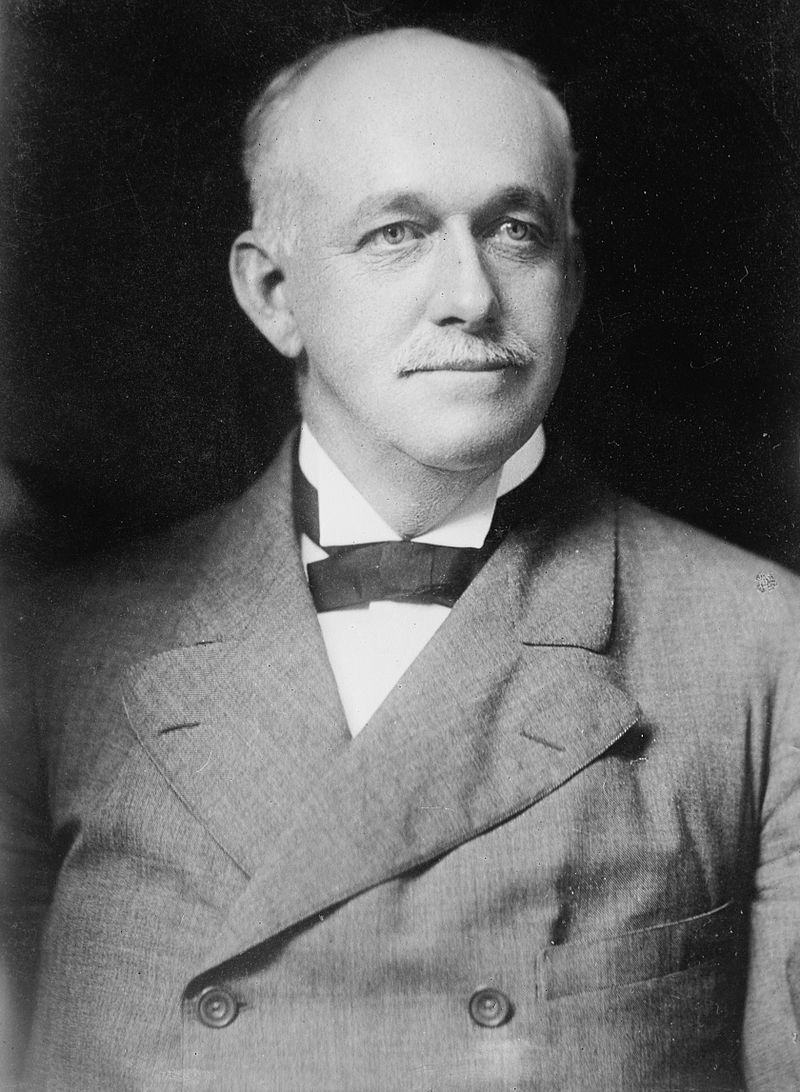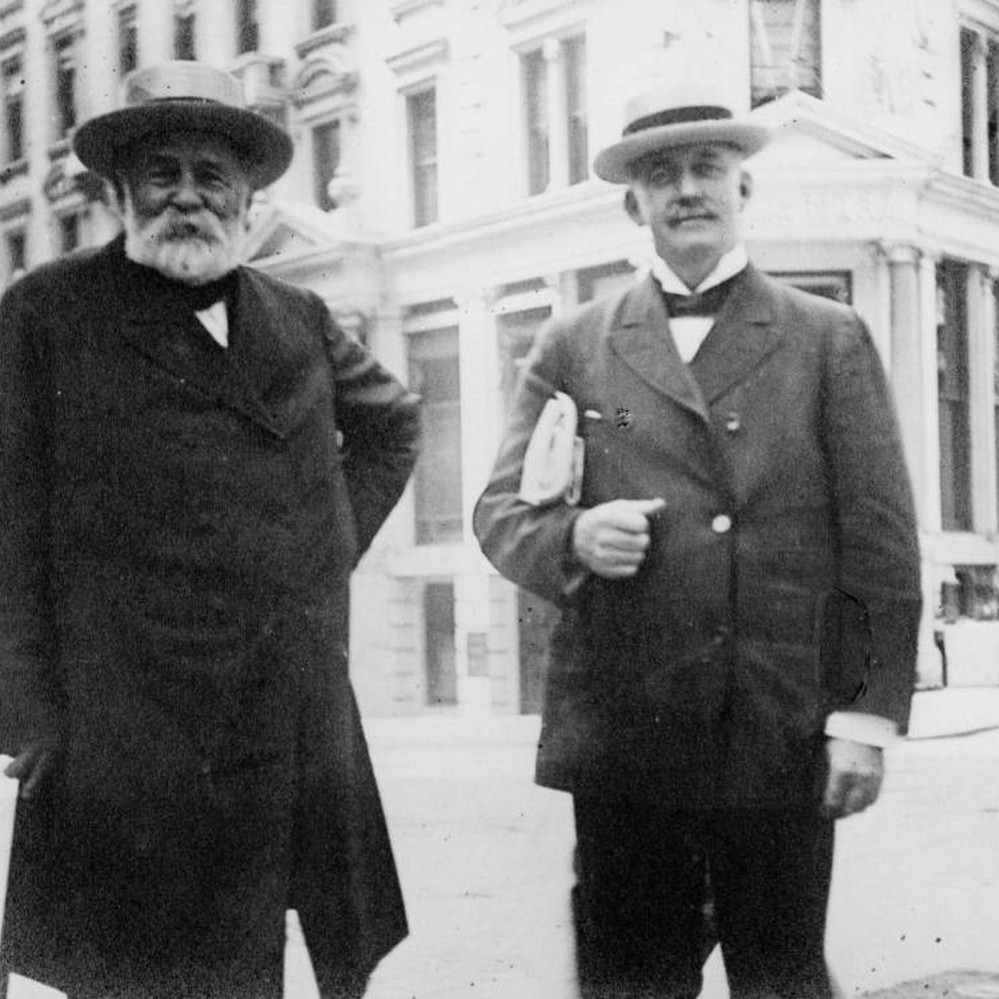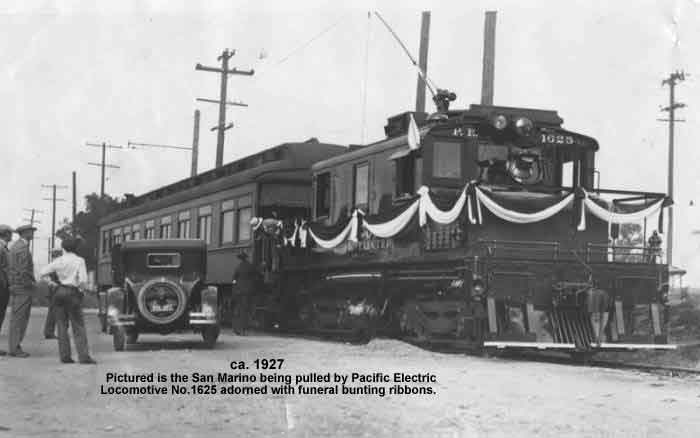Henry E. Huntington
(Not to be confused with his railroad baron uncle, Collis Potter Huntington)
American Railway Magnate, Business Man, Collector of Art and Rare Books

Henry E. Huntington (February 27, 1850 - May 23, 1927) was an American railroad magnate and collector of art and rare books. Huntington settled in Los Angeles, where he owned the Pacific Electric Railway as well as substantial real estate interests. In addition to being a businessman and art collector, Huntington was a major booster for Los Angeles in the late 19th and early 20th centuries. Many places in California are named after him.
Henry Huntington later worked with his uncle, holding several executive positions under him with the Southern Pacific. After Collis Huntington's death in 1900, Henry Huntington assumed the senior Huntington's leadership role with Newport News Shipbuilding and Drydock Company in Virginia. He later married his uncle's widow Arabella Huntington.
Huntington expected to assume control of the Central and Southern Pacific after his uncle's death. He was blocked by bondholder's representative James Speyer, forcing him to sell his interests to E. H. Harriman.

In 1898, in friendly competition with his uncle's Southern Pacific, Huntington bought the narrow gauge city-oriented Los Angeles Railway (LARy), known as the Yellow Cars
 In 1901, Huntington formed the sprawling interurban, standard gauge Pacific Electric Railway (the PE), known as the Red Car System centered at 6th and Main streets in Los Angeles. Huntington succeeded in this competition by providing passenger-friendly streetcars on 24/7 schedules, which the railroads could not match. This was in the period of a boom in Southern California land development. Housing was built in places such as Orange County's Huntington Beach, a Huntington-sponsored development, and streetcars served passenger needs that the railroads had not considered. Connectivity to Downtown Los Angeles made such suburbs feasible.
In 1901, Huntington formed the sprawling interurban, standard gauge Pacific Electric Railway (the PE), known as the Red Car System centered at 6th and Main streets in Los Angeles. Huntington succeeded in this competition by providing passenger-friendly streetcars on 24/7 schedules, which the railroads could not match. This was in the period of a boom in Southern California land development. Housing was built in places such as Orange County's Huntington Beach, a Huntington-sponsored development, and streetcars served passenger needs that the railroads had not considered. Connectivity to Downtown Los Angeles made such suburbs feasible.
Huntington retired from business in 1916. On May 23, 1927, Henry E. Huntington died in Philadelphia while undergoing surgery. He and Arabella are buried, with a large monument, in the Gardens of the Huntington Library in San Marino, California.
Legacy
Huntington left a prominent legacy with the Huntington Library, Art Museum and Botanical Gardens on his former estate in San Marino near Pasadena. Other legacies in California include the cities of Huntington Beach and Huntington Park, as well as Huntington Lake.
Also in greater Los Angeles are the Huntington Hospital in Pasadena, Henry E. Huntington Middle School in San Marino, and the grand boulevard, Huntington Drive, running eastbound from downtown Los Angeles. Its landscaped central parkway was previously the right-of-way for the Northern Division of the Pacific Electric.
Huntington  Drive
Drive
Huntington Drive is a major thoroughfare that begins in the Rose Hills community in Los Angeles, California and heads east/northeast to Irwindale, California. The street was named after railroad magnate Henry E. Huntington. It also served as one of the only thoroughfares between Los Angeles and Pasadena in the early 1900s. Portions of Huntington Drive were part of U.S. Route 66. The road has a wide median that was originally one of the lines of the Pacific Electric Railway, the Monrovia-Glendora Line.
Funeral  Train
Train
On May 24, 1927, Henry E. Huntington died following surgery in New York City. The following day, his coffin was loaded aboard his private car San Marino for the return trip across the nation to the city of San Marino, then on to his private estate. The San Marino arrived at the Southern Pacific Yards in Los Angeles on May 27. Pictured is the San Marino being pulled by Pacific Electric Locomotive No.1625 adorned with funeral bunting ribbons.